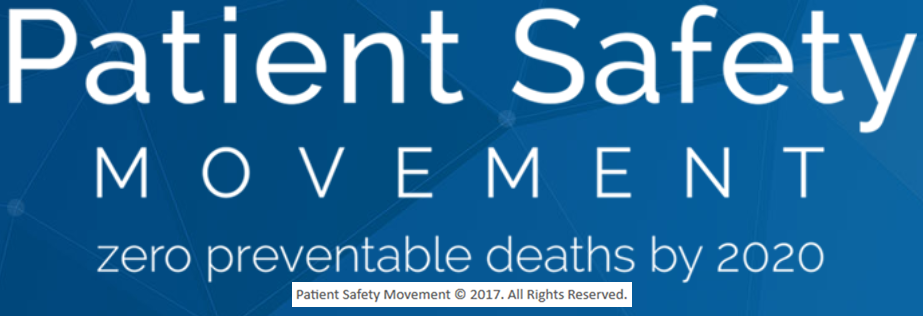
N.B. — This post is based on one of the continuously expanding roster of Actionable Patient Safety Solutions (APSS) a.k.a. “Challenges” as defined and described by the Patient Safety Movement Foundation (PSMF) and published at its web site (http://patientsafetymovement.org/challenges-solutions/actionable-patient-safety-solutions-apss/). Because the Foundation has set a goal of Zero Preventable Patient Deaths by 2020 (http://patientsafetymovement.org/), these APSS are understood to represent the most significant patient safety exposures created by medical mistakes, and medical mistakes are the third most frequent cause of patient deaths following heart disease and cancer (http://www.bmj.com/content/353/bmj.i2139).
“Errors in the use of blood products are a significant cause of hospital patient morbidity and mortality. To eliminate these errors, we must implement an effective Patient Blood Management program, including the following actionable steps:
- A Commitment from hospital leadership to support a Patient Blood Management program that closes the performance gap by reducing unnecessary transfusions while speeding up needed blood transfusion and care for patients who truly need it.
- Clinical and safety leadership endorse the plan and drive implementation across all providers and systems.
- Establish the Patient Blood Management Committee, which replaces the traditional hospital transfusion committee, and appoint an MD chairperson to be responsible and accountable for leading this group.
- On a monthly basis, distribute the blood product usage report by clinicians across the hospital to hospital leaders.
- Develop a Patient Blood Management education program for emergency and elective hospital admissions, targeting medical students, physicians, nurses, pharmacists and other healthcare staff.
- Implement interdisciplinary blood conservation modalities, including:
- Reductions of unnecessary laboratory tests, frequency of blood sampling, and “discard” volumes.
- A consistent protocol for preoperative management of platelet inhibitors and other anticoagulants.
- Technology that has been shown to improve patient care, such as continuous non-invasive hemoglobin monitoring and red cell recovery technology in the operating room (OR).
- Establish protocols for anemia management, including:
- Screen, diagnose and appropriately treat anemia prior to surgery, allowing adequate lead time to correct the anemia before surgery.
- Identify patients at risk for needing transfusion.
- Increase hemoglobin levels before surgery.
- Minimize the risk of hitting levels that require blood transfusions.
- When appropriate, establish single unit transfusion policy and advocate for restrictive transfusion practices.
- Document hemoglobin levels before the transfusion of each RBC unit.
- Consider alternative therapies to RBC transfusions, such as intravenous iron or erythropoietin stimulation agents (ESAs).
- Screen, diagnose and appropriately treat anemia prior to surgery, allowing adequate lead time to correct the anemia before surgery.
- Continuously monitor the effectiveness of the Patient Blood Management program, and use the results of this monitoring in medical staff educational sessions as a part of Continuous Quality Improvement (CQI).”
The foregoing quote constitutes the “Executive Summary Checklist” from the above-captioned PSMF APSS Challenge #5 (http://patientsafetymovement.org/challenge/anemia-and-transfusion/). The included bullet points are empirically based and appropriate, but the “continuously monitor” requirement associated with some and the degree of inter-personal/-departmental and time-/event-critical coordination required for most protocols are difficult if not impossible to achieve reliably in the complex healthcare provider venue/domain. However, these requirements are opportunities for a CHARTSaaS reference architecture-compatible solution to reliably mitigate mistakes and therefore to save lives. Please validate this proposition to your own satisfaction by reviewing the details of the Cloud Healthcare Appliance Real-Time Solution as a Service (CHARTSaaS) and its reference architecture in these presentations, and then by imagining a CHARTSaaS-enabled IT solution: